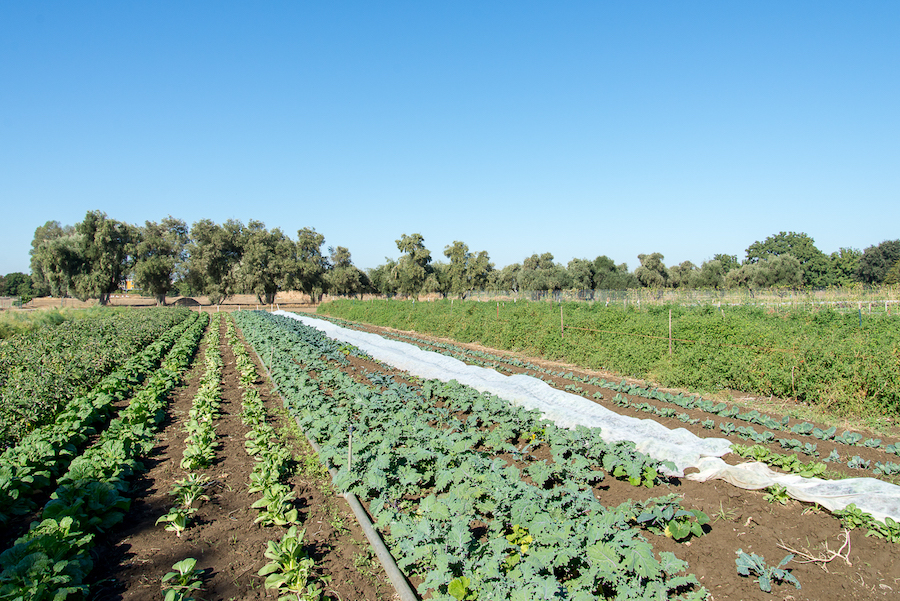
The fight to produce food
On one of my recent six-hour drives to Davis through Central California, I noticed two things at the center of this state’s environmental condition. One, that the entire state is dry and without water. Thousands of acres of grapevines, almond trees and all types of crops are struggling to stay alive under the plague of an ongoing drought. Despite some heavy rains this last winter, California still has a mandate to save water.
The second most noticeable part of my drive were the countless signs lining the side of the interstate, most of which read “No Water = Higher Food Cost!” The signs come from Families Protecting the Valley (FPV), an organized group of farmers and locals who have been voicing their concerns about the state’s ongoing water shortage. Farmers have been hit the hardest by the drought, losing natural water supplies, reservoirs and livelihoods. But farmers have been fighting an uphill battle even before the drought, and are constantly blamed for resource depletion.
People forget that without farmers, we would have no food. In areas like the one surrounding Fresno, which is considered one of the largest producers of agriculture in the United States, almost a quarter of the population is going hungry. California’s agriculture business is responsible for 400 different edible and inedible commodities through the entire nation. In 2014, there were 1.9 percent less farms operating than in 2013. Since many of these farms produce over $100,000 in sales, which is 20 percent greater than the national average, the decrease in farms is alarming. A lack of water and the constant adversity faced by farmers play no small role in this decrease. People are going hungry across the US and not because we aren’t producing enough food, but because we aren’t distributing our resources correctly. We have the means to feed everyone, but when retailers don’t sell imperfect foods, like bruised fruits, some figures suggest over 30 percent of produce goes to waste.
In order to fill the gap between food produced and actually consumed — which is created when Americans don’t buy and eat imperfect foods — farmers need even more water so they can produce more food. This would yield a greater percentage of foods that Americans would find palatable.
Yet in areas like California, which is responsible for two-thirds of the fruits and vegetables consumed in the US, we are running low on usable water. Less than one half of one percent of fresh water on the entire planet is available for us to grow food with and only on the first three feet of soil on one thirty-second of the planet’s surface.
This limits our resources a lot. So why are we fighting against the people trying to make our food instead of seeking out means to aid them and our growing population?
This country and the world depends on the food coming out of California even if the state is in turmoil and trying to keep up production in the middle of a drought. Farmers, like those in the FPV, want to draw consumer attention to the many problems they’re facing. They need water and we need to be willing to make sacrifices for ourselves in order to give them the means to keep the rest of us alive. Personal gardens grown in backyards won’t sustain an entire country, or the nearly 800 million people on Earth who do not. The old models of food production, devised in the 1950’s won’t hold up anymore. Farmers are fighting the oldest and most controversial battle history has ever seen and they are losing. With that in mind, we have to ask ourselves: Do we want to live in a future where we don’t have food? Because that’s the way we’re heading.
Davis wouldn’t be Davis without a strong focus on agriculture. Alice Rocha, a third-year animal science major, will bring that focus to the Aggie with a column on sustainable animal agriculture and how it impacts the food system today. This paper ran a column last year on ethical consumption, which was partly concerned with the potential downsides of our eating habits. Rocha will expand upon those concerns, using her own experience working in a lab to inform her takes on some of the most pressing issues we need to start working through today, including how to feed nine billion people by 2050.
Written by: Alice Rocha — asrocha@ucdavis.edu



